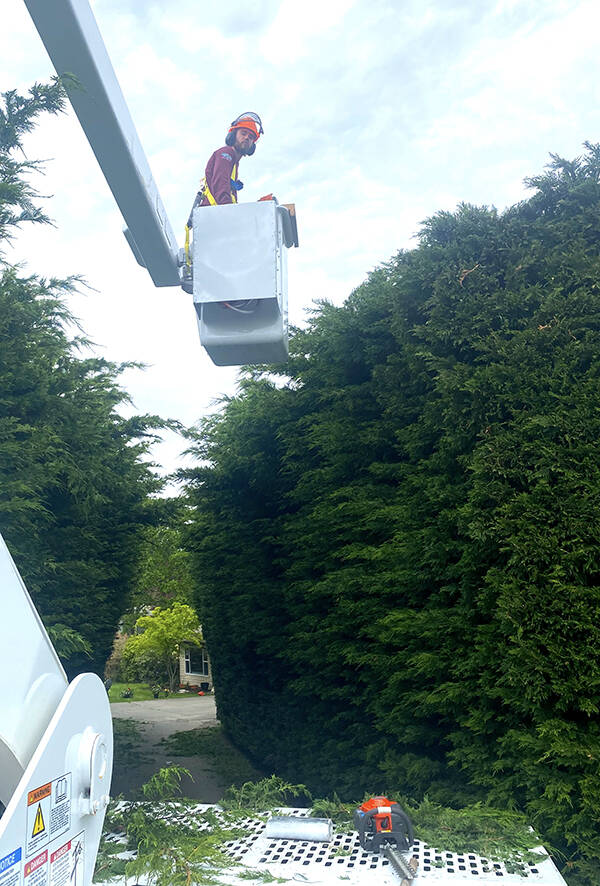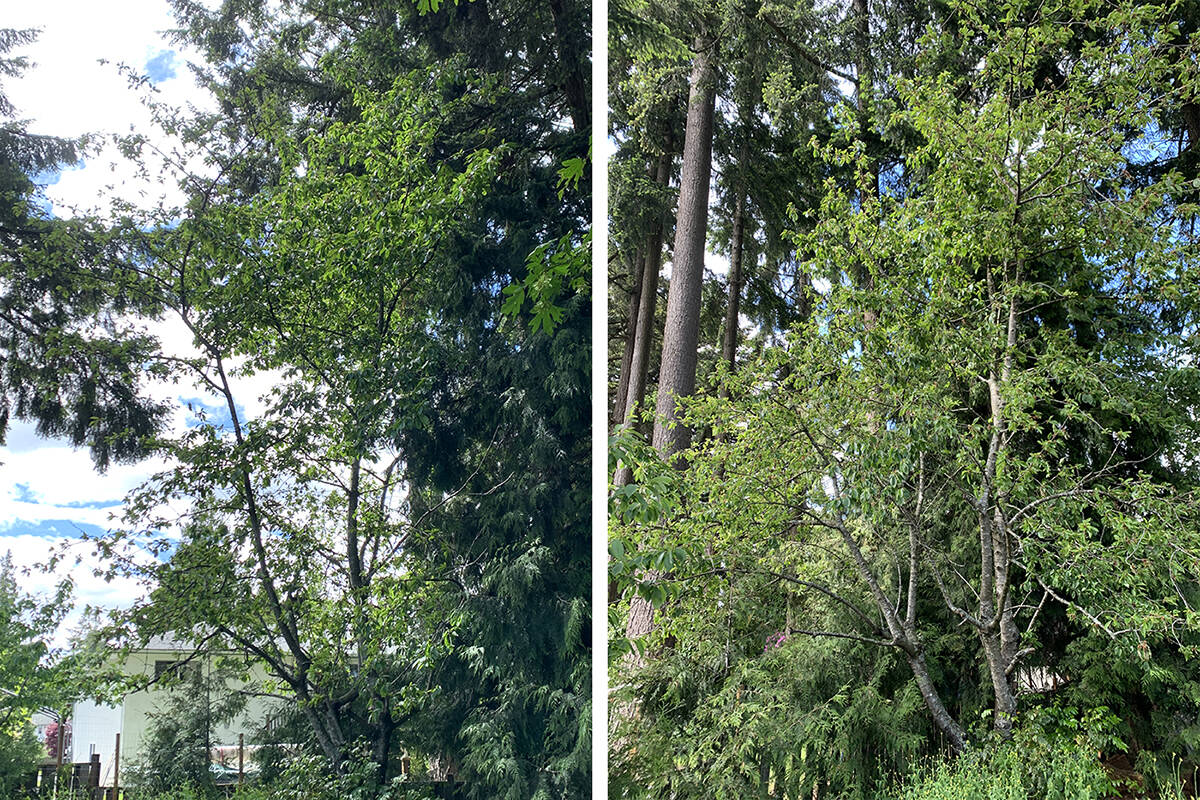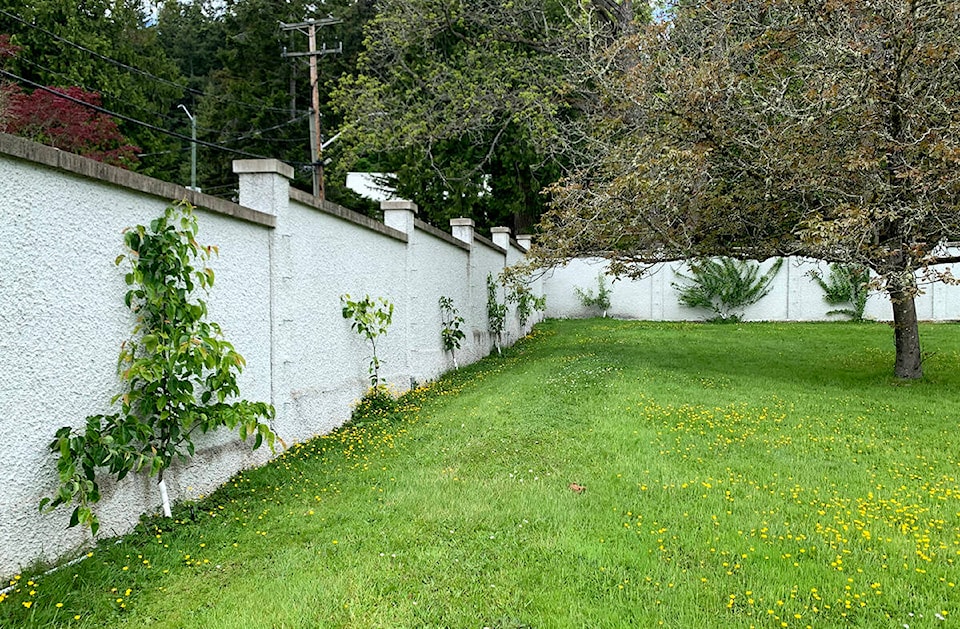ISA Certified Arborist Chris McVey from Osprey Tree Service in Victoria’s West Shore is back with answers to more of your tree maintenance questions.
My neighbour just planted an apple tree right along our shared fence line. I told him I didn’t want apples falling on my patio and he told me not to worry because it is going to make it an espalier. What does this mean?
Espalier is a style of pruning a tree in a two-dimensional plane. It is supported and pruned to follow a flat branch pattern, with several different variations existing. This pruning style uses less space, so it is suitable for yards that are limited in size. If your neighbour does manage to espalier the apple tree properly, it will add character and privacy to your property line, and the apples should all fall straight down on his side of the fence! 
Fruit trees and grape vines are the most common species of trees to espalier because this form helps to create better yields. Energy that would be directed to vertical growth is removed in favour of supplying fruit bearing buds. Branches that are trained from a young age become strong and will be less prone to breaking in the future. Pests are kept to a minimum as well, due to an increase in airflow through the spaced branches.
Increased airflow through the spaced branches means pests and diseases are kept to a minimum. Espalier along a sunny wall is also a great way to try growing plants which are sensitive to cold and damp, like peaches, apricots and figs. One drawback of this form is that it can be fairly labour intensive at first, and new branches don’t always follow the pattern you’re trying to grow.
If you’re interested and don’t know how to get started, give Osprey Tree Service a call to get an opinion on the feasibility of training your tree in this traditional style.

My cherry tree grows beautiful blossoms and I see lots of bee activity. Why isn’t it producing any fruit?
Cherry trees should start producing fruit after three to 10 years. If your mature tree still isn’t producing fruit, it may be due to poor pollination. Some cherry varieties can be self-pollinated, but others need cross pollination. Ask an arborist if planting a second cherry tree nearby will help with pollination.
Another factor? Improper pruning. Trees need energy to produce fruit, so if your cherry tree spends energy growing leafy branches it will have less energy to grow fruit. Professional tree pruning can encourage better fruit production.
Every cherry variety has a different ‘minimum number of winter chill hours,’ so in climates like Victoria, mild winters can be a contributing factor as well. Try Lapin or Stella cherry trees for sweet, dark, self-pollinating cherries in our milder climate.
Osprey Tree Service is based on the West Shore of Victoria, BC and serves southern Vancouver Island and the Gulf Islands. Their qualified team of certified arborists, forestry professionals and wildland firefighters offer residential and commercial tree removal, maintenance and assessments. Learn more at ospreytreeservice.ca. For a free quote, call 250-474-7993 or email info@ospreytreeservice.ca.
